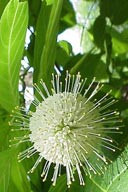 Loading... Please wait...
Loading... Please wait...- Home
- SEEDS
- SEED MIXES
- BUY PLANTS
- Info Request
-
Educational Videos
- Greenhouse Transplanting Demonstration
- Native Seed Cleaning demonstration at Ion Exchange Native Seed and Plant Nursery
- Attracting Butterflies
- Bidens - Bidens cernua Harvest Video
- Big Blue Stem Harvest
- Butterfly Milkweed Video
- Button Blazingstar - Liatris aspera Video
- Buttonbush - Cephalanthus occidentalis Video
- Canada Anemone - Anemone canadensis Harvest Video
- Cardinal Flower - Lobelia cardinalis Video
- Control Burn - Wildflower Field
- Cream Gentian - Gentiana flavida
- Culver's Root - Veronicastrum virginicum Video
- Cup Plant - Silphium perfoliatum Video
- Dormant Seeding | Planting
- Earthyman's Favorite Wildflowers Video
- Eco-Friendly Golf Course Seed Mix
- Floating Islands
- Fringed Loosestrife - Lysimachia ciliata Video
- Giant Yellow Hyssop - Agastache nepetoides Video
- Indiangrass - Sorghastrum nutans Video
- Iowa Prairie Partner Program
- Leadplant - Amorpha canescens (Potted) Video
- Meadow Blazingstar - Liatris ligulistylis
- Midland Shooting Stars - Dodecatheon meadii Video
- Native Plant Nursery Field Irrigation Experiment
- Nodding Onion - Allium cernuum Video
- Ohio spiderwort - Tradescantia ohiensis Video
- Old Man's Beard - Clematis virginiana blooms Video
- Oxeye Sunflower - Heliopsis helianthoides Video
- Prairie Spiderwort - Tradescantia bracteata
- Purple Coneflower - Echinacea purpurea Video
- Rain Garden or Water Garden Video
- Rattlesnake Master - Eryngium yuccifolium Video
- Riverbank Stabilization - Wetland Plants
- Rose Mallow - Hibiscus militaris Video
- Rosinweed - Silphium integrifolium Video
- Royal Catchfly - Silene regia
- Showy Tick Trefoil - Desmodium canadense Video
- Sneezeweed - Helenium autumnale Video
- Swamp Betony - Pedicularis lanceolata Video
- Swamp Milkweed - Asclepias incarnata Video
- Sweet Blackeyed Susan - Rudbeckia subtomentosa Video
- Tall Coreopsis - Coreopsis tripteris Video
- Urban Butterfly Garden
- Wild Bergamot - Monarda fistulosa Video
- Wild Geranium - Geranium maculatum Harvest
- Wild Goldenglow - Rudbeckia lanciniata Video
- Wild Petunia - Ruellia humilis Harvest Video
- Woodland Knotweed - Polygonum virginianum Video
- Yellow Coneflower - Ratibida pinnata Video
- Blog
- Resources
- Policies
Contact Us
Phone:
563-419-0837
or 563-535-7231
Email:
hbright@ionXchange.com
Browse Products
Add to Wish List
You Recently Viewed...
Our Newsletter
CEPHALANTHUS OCCIDENTALIS | Buttonbush
Product Description
Buttonbush, Common Buttonbush, Globeflowers, Honey-balls, Pond Dogwood, Swamp Sycamore
From the Greek kephale meaning head and occidentalis meaning western or of the western hemisphere.
Found in most of the northeastern and eastern US with varieties found through the Great basin and California and south through Texas. In the Tallgrass region, it favors the edges of ponds and swamps. Fragrant white flowers show from July through August. With ideal conditions, it can reach 20 feet in height, but normally grows 3 to 6 feet in height. The fruits of Buttonbush are eaten by some bird species during the winter months and pheasants and wood duck feed on the seeds.
Southern Native Americans and French Settlers made a tonic from the bark of the Buttonbush to treat fevers. It is related to the coffee tree and the tree which provides quinine. The leaves do contain glucoside, a known poison which can affect grazing animals. Some medicines are derived from the leaves and the root bark has been used to treat diabetes.
| Sun Exposure | Prairie, Savanna |
| Soil Moisture | Wet, Wet Mesic, |
| Bloom Time |
Summer |
| Bloom Color | White |
| Max Height | to 15 feet |
| Wetland Code | OBL |
| Germ Code | A |
| Seeds Per Packet | 150 |
| Seeds Per Ounce | 6,000 |
Edible Uses: Unknown
Medicinal Uses: Button bush was often employed medicinally by native North American Indian tribes who used it to treat a range of ailments. It is little used in modern herbalism.
A tea made from the bark is astringent, emetic, febrifuge and tonic. A strong decoction has been used to treat diarrhoea and dysentery, stomach complaints, haemorrhages etc. It has been used as a wash for eye inflammations.
A decoction of either the roots or the fruits have been used as a laxative to treat constipation.
The leaves are astringent, diaphoretic, diuretic and tonic. A tea has been used to check menstrual flow and to treat fevers, kidney stones, pleurisy etc. The plant has a folk reputation for relieving malaria.
The inner bark has been chewed in the treatment of toothaches.
Other Uses: Wood - light, tough. Of no commercial value
Herbal Uses: Unknown
Product Videos
-
 Buttonbush - ...Earthyman views Buttonbush (Cephalanthus occidentalis) in bloo...
Buttonbush - ...Earthyman views Buttonbush (Cephalanthus occidentalis) in bloo...
Product Videos

Product Reviews
-
Growing strong after one year

Posted by T.C. (in Iowa) on 18th Jun 2015
All my seven plugs were first repotted to let them grow little more. Then I gradually planted them around the yard. All of them are over a foot tall now and growing well and strong. Cannot wait for the first blooms! Great shrubs, outstanding value for your money when you need lots of plants for a big property.
-
Healthy

Posted by Julie Borneman on 30th Jun 2014
Nice sized plants and very healthy with strong roots. I am really happy with this plant.








